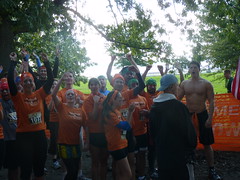-3, 3-4, 5-6, 7-8, 8+. Price: to. Home Shop and Compare Panasonic Lumix DMC-ZS3 Price Comparison ...
Saturday, December 24, 2011
Saturday, November 26, 2011
Which Compact Digital Camera is the Best Overall? Panasonic Lumix DMC-ZS3 Fits the Bill
Wednesday, November 23, 2011
Panasonic DMC-FH25A 16.1MP Digital Camera with 8x Wide Angle Image Stabilized Zoom and 2.7 inch LCD (Blue)
!: Wholesale Panasonic DMC-FH25A 16.1MP Digital Camera with 8x Wide Angle Image Stabilized Zoom and 2.7 inch LCD (Blue) Shop for
 | Price : $134.95
| Price : $134.95Post Date : Nov 23, 2011 21:39:13 | Usually ships in 24 hours
Panasonic Lumix DMC-FH25 16.1 Megapixel Compact Camera - 5 mm-40 mm - Blue DMC-FH25A Digital Cameras
- Enable the recording of beautiful images with higher quality signal processing including the Intelligent Resolution technology
- It includes numerous re-engineering enhancements, including a higher-speed actuator, optimized algorithms and parallel software processing.
- Even slight hand-shake movement is accurately detected by a sampling frequency of 4,000 times per second and produces sharp, clear images
Friday, November 18, 2011
Panasonic Lumix DMC-ZS3 10.1 MP Digital Camera with 12x Wide Angle MEGA Optical Image Stabilized Zoom and 3 inch LCD (Black)
!: The Top 10 Places to Buy Panasonic Lumix DMC-ZS3 10.1 MP Digital Camera with 12x Wide Angle MEGA Optical Image Stabilized Zoom and 3 inch LCD (Black) buy online
The new Lumix ZS3 features 10.1-megapixels, a 25mm ultra-wide-angle lens and 12x optical zoom, meaning it has added 2x optical zoom to the award-winning TZ-series camera, yet reduced its size. The ZS3 also features a Leica DC Vario-Elmar lens and High Definition (HD) video recording ability, known as AVCHD Lite.The ZS3 is the world’s first digital camera to feature HD video recording in AVCHD Lite. Compared with the conventional Motion JPEG format, AVCHD Lite allows longer recordings with breathtaking HD visual and audio quality. This combined with a well-considered control interface, which includes a dedicated movie recording button on the camera’s back panel, makes the ZS3 a hybrid model that performs admirably for both still and motion image capture.
- Panasonic DMW-BCG10 ID Secured Battery for Select Panasonic Cameras (Retail Packaging)
- BoxWave Lumix DMC-ZS3 ClearTouch Crystal Screen Protector (Single Pack)
- Transcend 8 GB Class 6 SDHC Flash Memory Card TS8GSDHC6
- Lowepro Rezo 30 (Black)
- Panasonic Lumix DMC-ZS3 10MP Digital Camera Compact Protective Hard Sleeve
Cheap Sorel Winter Boots Purchasing Old Gringo Celeste Boots
Thursday, November 10, 2011
Panasonic Lumix DMC-ZS8 14.1 MP Digital Camera with 16x Wide Angle Optical Image Stabilized Zoom and 3.0-Inch LCD (Silver)
!: Cheaper Panasonic Lumix DMC-ZS8 14.1 MP Digital Camera with 16x Wide Angle Optical Image Stabilized Zoom and 3.0-Inch LCD (Silver) cheap
Brand : PanasonicRate :

Price : $179.99
Post Date : Nov 11, 2011 03:12:54
Usually ships in 24 hours
Panasonic Lumix DMC-ZS8 14.1 Megapixel Compact Camera - 4.30 mm-68.80 mm - Silver DMC-ZS8S Digital Cameras
!: Tvs On Sale This Week How To Make A Drip Watering System Buy Online Promotional Transformers 110v
Tuesday, November 8, 2011
Saturday, November 5, 2011
Friday, October 28, 2011
Monday, October 24, 2011
Wednesday, October 19, 2011
Sunday, October 16, 2011
Panasonic Lumix DMC-FZ40 14.1 MP Digital Camera with 24x Optical Image Stabilized Zoom and 3.0-Inch LCD (Black)
!: Catalog Panasonic Lumix DMC-FZ40 14.1 MP Digital Camera with 24x Optical Image Stabilized Zoom and 3.0-Inch LCD (Black) free shipping
Brand : PanasonicRate :

Price : $285.10
Post Date : Oct 17, 2011 04:12:14
Usually ships in 1-2 business days
Panasonic Lumix DMC-FZ40 14.1 Megapixel Bridge Camera - 4.50 mm-108 mm - Black DMCFZ40K Digital Cameras
Solve Crochet Beanie Hats Patterns Solar Pond Water Pumps Sale
Saturday, April 16, 2011
Sunday, April 10, 2011
Monday, March 28, 2011
Monday, March 21, 2011
 |
 |
 |
 |
 |
 |
 |
 |
Sponsor Links
- Price Shoes on Sale
- Dual Fuel Ranges Shop
- Proform Tread Mills Sale
- Price Compare Kohler K-10122-af Rain Showerhead With Traditional Design, Vibrant ...
- Proform 485e Elliptical Machine Quick
- Fiel Women's Suyan Flat... Buy Now
- The Winter Wake... Quick
- Cadence Bicycle Guide
- Recumbent Bike Exercise Buy Online
- Top 10 Osprey Daylite







